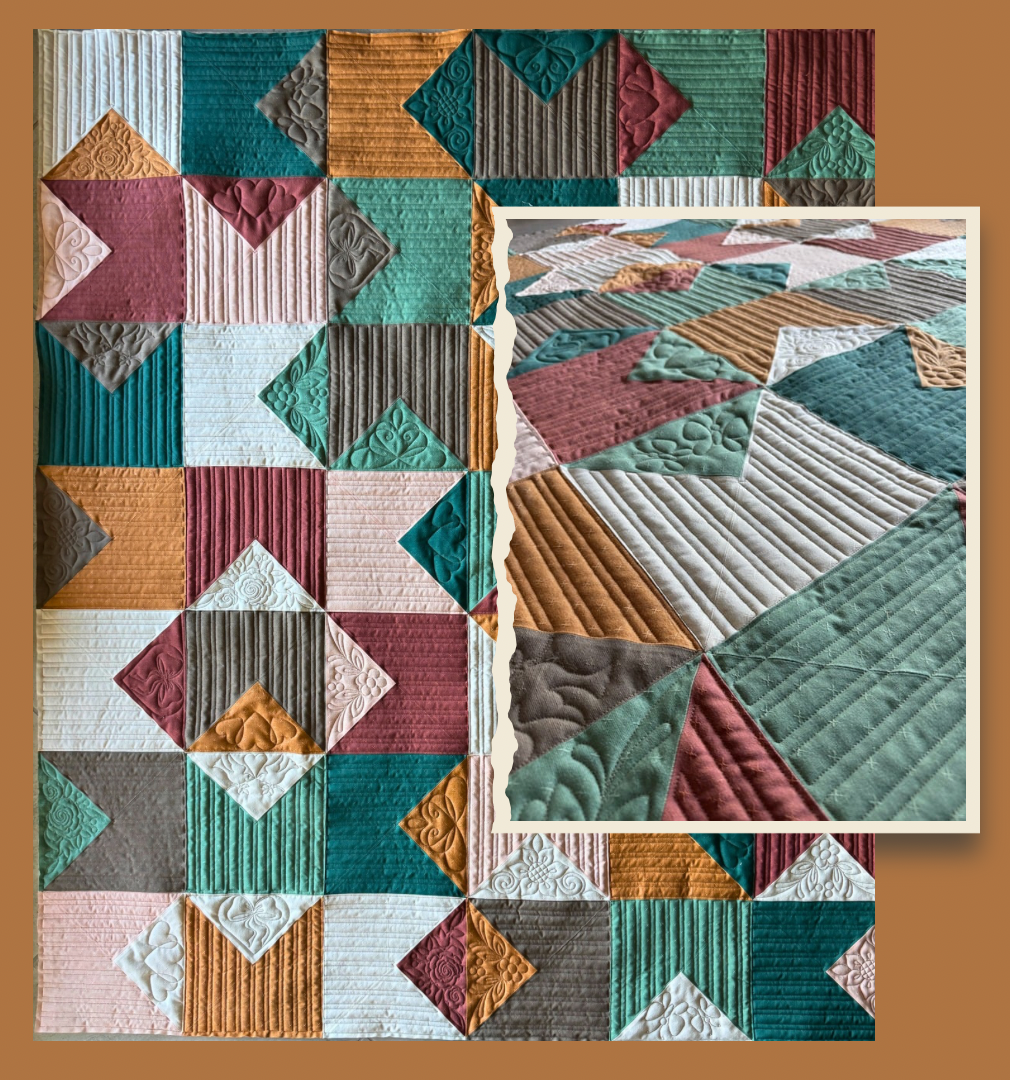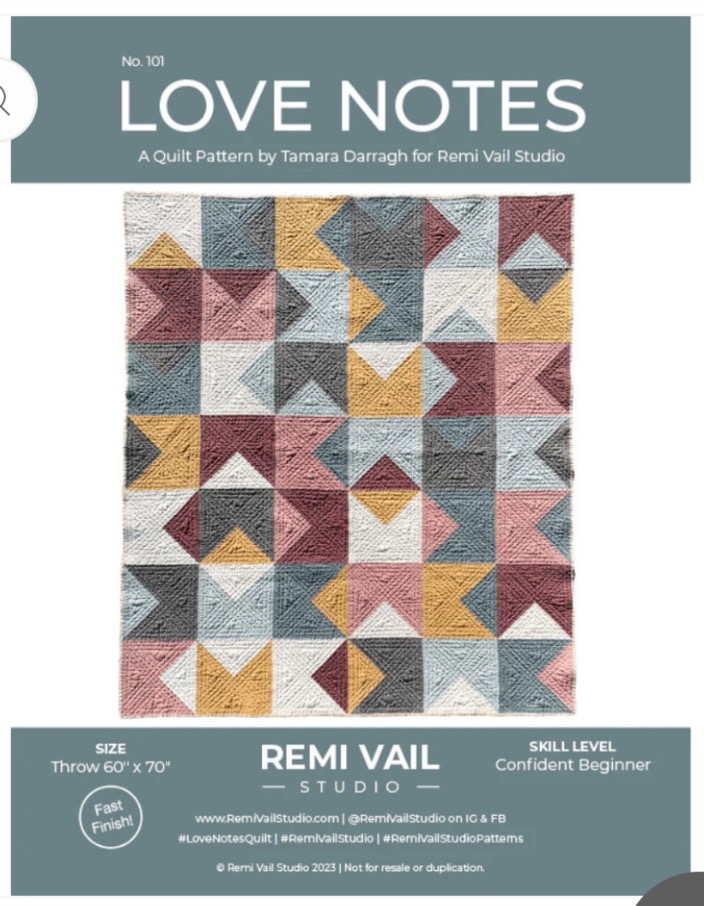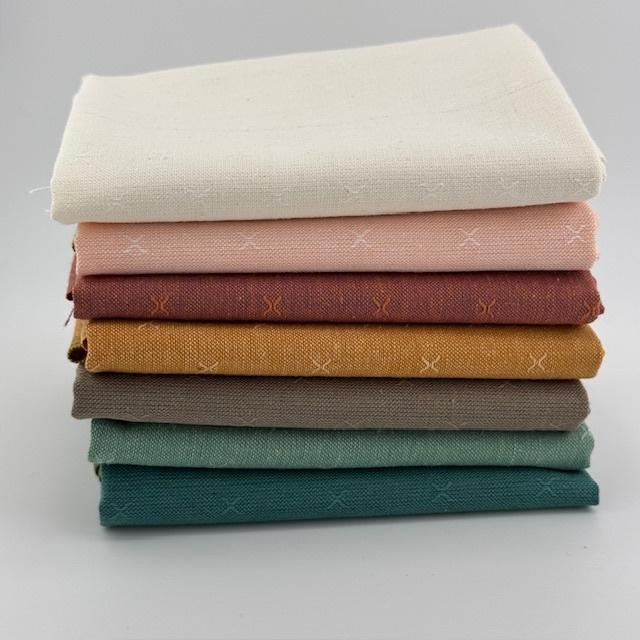It’s been a hot minute since I took the time to do a project just for me…one that really brought me joy. When you run a small business, you tend to get caught up in what the customers want, the new trends, new patterns, new fabric collections, and a myriad of other things. So over the holidays, I decided to focus on something I’ve been wanting to do for a long time...make a quilt out of wovens.
These days, as with most things quilting, there are a lot of options when it comes to wovens. AGF, Andover, Fableism, Marcus, Moda and Robert Kaufman, among others, all carry their own lines of wovens. I spent a fair amount of time looking at all the different brands and comparing the weave, the drape, and the hand. I was looking for a soft hand with nice drape, combined with a tight enough weave to be durable. In the end, I decided to work with Fableism wovens. They are soft, cuddly, and available in the loveliest of colors.
Woven fabrics are made from a looser weave than your typical quilting cottons. This makes wovens vulnerable to stretching, fraying, and shrinkage. I'm not typically a pre-wash person, but in the case of wovens, I recommend pre-washing your fabric. Get that shrinkage out of the way right up front! I didn't wash the fabric for this particular quilt because it is going to hang in my vendor booths for the next 6 months and I want it to have that fresh "right out of the box" look. When I do wash it, it will get washed on cold and hung out to dry.
What I did do, to prevent stretching and fraying, is use a healthy amount of Acorn Easy Press Fabric Spray. Easy Press is not a starch, it is a fabric stabilizing spray. I dampened the front side of my yardage, let it sink in, flipped it over and pressed the back with a hot iron until dry. Then I sprayed the back side of the fabric, flipped it over to the front and pressed again. The result was a nice stable fabric. I didn't get any stickiness or white residue from the spray and the scent wasn't offensive at all.
Before I started cutting my fabric, I changed my rotary cutter blade. Since wovens are prone to fraying, it is important to make sure cuts are smooth and clean. As a newby to wovens, I was expecting to have some difficulty with the cutting process. Thankfully, between the Easy Press and the new blade, I experienced zero difficulty with stretching while cutting my fabrics.
The pattern I chose for my quilt is called Love Notes by Tamara Darragh from Remi Vail Studio. The pattern is rated for a "Confident Beginner". While I'm not a beginner, I thought it would be a good idea to select an easier pattern for learning to work with a new fabric. The blocks making up this quilt are 10" HST and QST blocks. QSTs can be a little tricky because you are working on the bias, but the larger size blocks make it more than manageable.
A sharp needle, using plenty of pins, and reducing seam bulk are important to the outcome of any quilt, but especially important with wovens. I changed my needle twice for this quilt, once before I pieced the blocks and again before constructing the quilt top. Normally, I don't need to pin my fabrics when sewing half-square or quarter-square triangles; however, for this project, I chose to pin my fabrics for added stability when sewing the diagonal seams. This allowed me to handle the fabric more gently at the sewing machine minimizing stretching and fraying. When pressing, I pressed most of the seams open, which was recommended in the pattern to reduce bulk. The quilt went together without difficulty and it lays nice and flat.
When it came time for quilting, a wool batting was selected. Wool batting is light weight with plenty of loft to show off the longarm stitching. For consistency, Fableism wovens were chosen for the backing and binding resulting in a super soft and snuggly quilt.
Overall, this was a very positive experience. With proper preparation and handling, I didn't have any more difficulty working with the woven fabrics than I have with any other quilting cotton or flannel fabrics. If you have been thinking about making a quilt out of wovens, I would encourage you to give it a try. If you properly prepare your fabric, make sure to use a fresh rotary blade, change your needle, and pin often, you too can have success with wovens!
Credits:
- Piecing - Sebrina Riddle, West Valley Quilting
- Longarming - James Riddle, West Valley Quilting
- Quilt Pattern - Love Notes by Tamara Darragh, Remi Vail Studio
- Longarm Pattern - Envelope Block by Anne Bright, Anne Bright Designs
Links to fabrics and kits:



My First Experience with Wovens